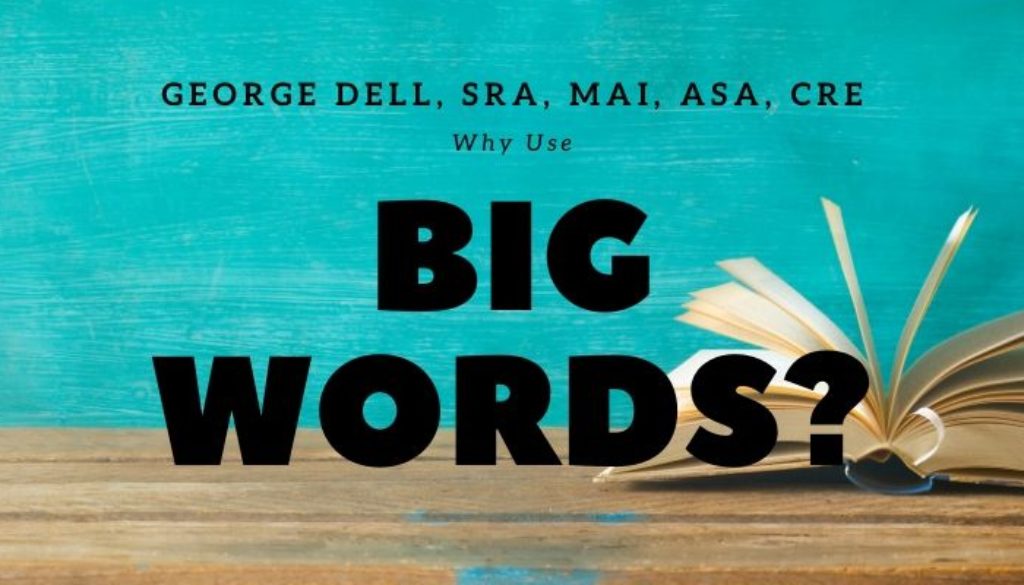I have been accused of using new big words, when old little ones would do!
Yes. Guilty. Why? What is the context? What are the goals? What is the path to the goals?
The context is that most readers of these blogs are appraisers or collateral/risk people. The context is also that all related financial and “asset” industries are tangled in data disruption from big data, predictive analytics, and automated intelligence. Words define the context.
The goal is twofold: 1) to help bring the appraisal ‘profession’ into the twentieth century, and: 2) to serve clients and the public good through better safety for borrowers, investors, and taxpayers.
The path to change involves technology. It also involves someone with competence in the subject field of knowledge. The answer to big data is the science of data. That is the path – data science.
Data science is new. A new science involves some new terms. Old words can get in the way. Let’s look. Data science for valuation comprises three things: 1) Complete data, (rather than samples); 2) Computation (models, algorithms, visualization), and; 3) asset economics. (Valuation and risk analysis are a subset of econometrics.) These entail different words than traditional “cottage industry” appraisal as we were taught.
What are the old comfortable words? Here is a list: appraisal; statistics; elements of comparison; comparable; bias; credible; value. This list could be expanded a lot. But let’s compare.

As you can see, if we continue to use traditional words for traditional meanings, it is difficult to clear our brains enough to allow the new modern meanings to percolate in.
Words are symbols. We respond to our mental symbols. Once lodged in, they are comfortable and require no thought. And they are difficult to clean out, kind of like cleaning a dark room heavy in cobwebs. Old words are cobwebs of the mind. New words are open windows allowing light to shine in.

June 24, 2020 @ 3:47 am
As usual, George, great stuff! Thank you!
June 27, 2020 @ 8:23 pm
Hopefully, I am making the transition to a better use of words. Although, in recent years, I have written shorter reports, fewer words.
There once was a time in my career, where I used a lot of words and wrote in an officious manner. To satisfy the reviewers of some lender clients, reports got to be over 150 pages. I think they suffered regulatory paranoia. My solution was to fire them one t a time.
Now, I do almost no lender work, I mean, maybe 1-2 jobs a year. My reports even on the most complex legal cases, may only be 20-40 pages, written in a muscular style that is easy to read. Often, I do not even write a report.